Today Current Affairs: 16th July 2021 for UPSC IAS exams, State PSC exams, SSC CGL, State SSC, RRB, Railways, Banking Exam & IBPS, etc
Table of Contents
Rebate on Central and State Taxes and Levies (RoSCTL):
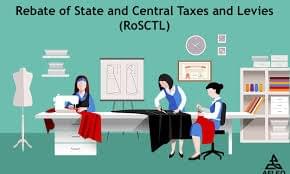
Garment exporters will continue to get a rebate on central and state taxes on their outward shipments as the government approved extension of RoSCTL scheme till March 2024.
- The move is aimed at enhancing competitiveness of the labour-intensive textiles sector.
- The Union Cabinet chaired by Prime Minister Narendra Modi has given its approval for continuation of Rebate of State and Central Taxes and Levies (RoSCTL) with the same rates as notified by the Ministry of Textiles for exports of apparel/garments and made-ups.
- The scheme will continue till March 31, 2024. It will help boost exports and job creation,.
- The sectors covered under this scheme (apparel/garments and made-ups) would not get benefits under the Remission of Duties and Taxes on Exported Products (RoDTEP) scheme.
- However, textiles products which are not covered under the RoSCTL would be eligible to avail the benefits, if any, under RoDTEP along with other products as finalised by the Department of Commerce.
- The scheme will be implemented by the Department of Revenue with end-to-end digitisation for issuance of transferrable Duty Credit Scrip, which will be maintained in an electronic ledger in the customs system.
Infrastructure Facilities For Judiciary:

The Union Government has approved continuation of the Centrally Sponsored Scheme (CSS) for Development of Infrastructure Facilities for Judiciary for further five years to 2026 at a total cost of Rs. 9000 crore.
- Rs.50 crore will be allocated for Gram Nyayalayas Scheme through National Mission for Justice Delivery and Legal Reforms.
- CSS for Development of Infrastructure Facilities for Judiciary has been in operation since 1993-94.
- This proposal for continuation of the CSS will help in construction of 3800 court halls and 4000 residential units (both new and ongoing projects) for judicial officers of District and Subordinate Courts, 1450 lawyer halls, 1450 toilets complexes and 3800 digital computer rooms.
- This will help in improving the functioning and performance of the Judiciary in the country and will be a new step towards building better courts for a new India.
- The upgraded “Nyaya Vikas-2.0” web portal and mobile application is used for monitoring physical and financial progress of CSS judicial infrastructure projects by geo-tagging completed and ongoing projects.
Special Livestock Sector Package:

The Cabinet Committee on Economic Affairs (CCEA) has approved implementation of a special livestock sector package.
About the Package:
- Aim: To boost growth in the livestock sector and thereby making animal husbandry more remunerative to 10 crore farmers engaged in Animal Husbandry Sector.
- The Central government will spend Rs. 9,800 crore on livestock development over the next five years in a bid to leverage almost Rs. 55,000 crore of outside investment into the sector.
- It includes the share of investments by State Governments, State Cooperatives, Financial institutions, External funding agencies and other stakeholders.
- The package has been designed by revising and realigning various components of the Department of Animal Husbandry & Dairying’ Schemes for the next five years, starting 2021-22.
- All the schemes of the Department will be merged into three broad categories as:
- Development Programmes: It includes Rashtriya Gokul Mission, National Programme for Dairy Development (NPDD), National Livestock Mission (NLM) and Livestock Census and Integrated Sample Survey (LC & ISS) as sub-schemes.
- Disease Control Programme: It is renamed as Livestock Health and Disease Control (LH & DC) which includes the present Livestock Health and Disease Control (LH & DC) scheme and National Animal Disease Control Programme (NADCP).
- Infrastructure Development Fund: The Animal Husbandry Infrastructure Development fund (AHIDF) and the Dairy Infrastructure Development Fund (DIDF) are merged and the present scheme for support to Dairy Cooperatives and Farmer Producer Organizations engaged in Dairy activities is also included in this third category.
National Ayush Mission:

The government has decided to continue the National Ayush Mission (NAM) as a centrally sponsored scheme till 2026.
- The project will have a total cost of Rs. 4,603 crore, of which the Centre will bear Rs 3,000 crore share, and the states will cover the rest.
- Recently, new portals on the Ayush sector were also launched.
- The Mission was launched on 15-09-2014.
- Centrally Sponsored Scheme of National AYUSH Mission is being implemented by Ministry of AYUSH, Government of India.
- Its objectives are providing cost effective AYUSH Services, with a universal access through
- upgrading AYUSH Hospitals and Dispensaries,
- co-location of AYUSH facilities at Primary Health Centers (PHCs), Community Health Centers (CHCs) and District Hospitals (DHs),
- strengthening institutional capacity at the State level through upgrading AYUSH educational institutions,
- setting up of new upto 50 bedded integrated AYUSH Hospital,
- AYUSH Public Health programmes and
- operationalization of 12,500 AYUSH Health and Wellness Centres.
Wholesale Price Index (WPI) For The Month Of June, 2021.:
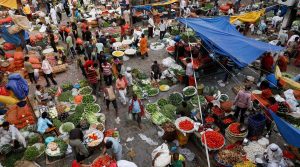
The Office of the Economic Adviser, Department for Promotion of Industry and Internal Trade has released the Wholesale Price Index (WPI) for the month of June, 2021.
Wholesale Price- Inflation:
- Inflation in wholesale prices stayed high in June 2021 at 12.07% following the record high of 12.94% in May 2021.
- The high rate of inflation in June 2021, is primarily due to low base effect.
- Base effect: It is the effect that choosing a different reference point for a comparison between two data points can have on the result of the comparison.
- Rise in prices of mineral oils viz petrol, diesel, naphtha, furnace oil etc.
- Increased costs of manufactured products like basic metal, food products, chemical products etc as compared the corresponding month of the previous year.
- Retail inflation based on the Consumer Price Index (CPI), was at 6.26% in June 2021.
- Implication:
- Wholesale Price- Inflation’s potential to spill over into retail inflation (CPI inflation) levels will inject ‘uneasiness’ in the monetary policy.
- Monetary policy is the macroeconomic policy laid down by the central bank. It involves management of money supply and interest rate and is the demand side economic policy used by the government of a country to achieve macroeconomic objectives like inflation, consumption, growth and liquidity.
Wholesale Price Index:
- It measures the changes in the prices of goods sold and traded in bulk by wholesale businesses to other businesses.
- Published by the Office of Economic Adviser, Ministry of Commerce and Industry.
- It is the most widely used inflation indicator in India.
- Major criticism for this index is that the general public does not buy products at wholesale price.
- The base year of All-India WPI has been revised from 2004-05 to 2011-12 in 2017.
Consumer Price Index
- It measures price changes from the perspective of a retail buyer. It is released by the National Statistical Office (NSO).
- The CPI calculates the difference in the price of commodities and services such as food, medical care, education, electronics etc, which Indian consumers buy for use.
Sankalp Se Siddhi: Mission Van Dhan:
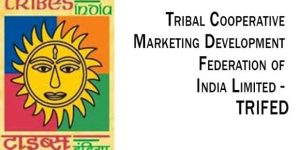
The Minister of Tribal Affairs reviewed various initiatives under ‘Sankalp Se Siddhi-Mission Vand Dhan’, by TRIFED (Tribal Cooperative Marketing Development Federation of India).
- The ‘Sankalp Se Siddhi’ initiative, also known as ‘Mission Van Dhan’, was introduced by the central government in 2021, in line with the Prime Minister’s aim to establish a sustainable livelihood for India’s tribal population.
- Through this mission, TRIFED aims to expand its operation through convergence of various schemes of different ministries and departments and launch various tribal development programmes in mission mode.
- Through this mission, establishment of several Van Dhan Vikas Kendras (VDVKs), haat bazaars, mini TRIFOOD units, common facility centres, TRIFOOD parks, SFRUTI (Scheme of Fund for regeneration of traditional industries) clusters, tribes india retail store, e-commerce platform for trifood and tribes, India brands are being targeted.
- TRIFED has been implementing several noteworthy programmes for the empowerment of the tribals.
- Over the past two years, the ‘Mechanism for Marketing of Minor Forest Produce (MFP) through Minimum Support Price (MSP) & Development of Value Chain for MFP’ has impacted the tribal ecosystem in a major way.
- TRIFED has also injected Rs. 3000 crores into the tribal economy, even during such difficult times, aided by government push.
- The Van Dhan tribal start-ups, a component of the same scheme, have emerged as a source of employment generation for tribal gatherers and forest dwellers and the home-bound tribal artisans.
TRIFED:
- The Tribal Cooperative Marketing Development Federation of India (TRIFED) came into existence in 1987.
- It is a national-level apex organization functioning under the administrative control of the Ministry of Tribal Affairs.
- The ultimate objective of TRIFED is socio-economic development of tribal people in the country by way of marketing development of the tribal products such as metal craft, tribal textiles, pottery, tribal paintings and pottery on which the tribals depends heavily for a major portion of their income.
Scheme For Promotion Of Flagging Of Merchant Ships In India:
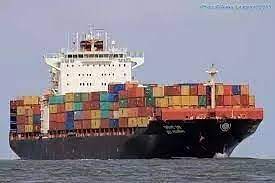
The scheme was approved by the cabinet recently.
- The scheme seeks to provide Rs.1624 crore over five years as a subsidy to Indian Shipping companies in global tenders floated by Ministries and CPSEs for import of government cargo.
- The budgetary support would be provided directly to the Ministry/Department concerned.
- The subsidy support would be extended only to those ships which have bagged the award after the implementation of the scheme.
- Flexibility in the allocation of funds for expenditure from one year to another and within the various Ministries/Departments of the scheme.
- Ships older than 20 years would not be eligible for any subsidy.
What is UV-C Disinfection Technology?:
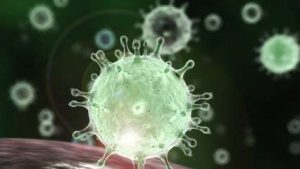
Ultraviolet-C or UV-C Disinfection Technology will soon be installed in Parliament for the “mitigation of airborne transmission of SARS-COV-2’’.
- UV-C air duct disinfection system Developed by CSIR-CSIO (Central Scientific Instruments Organisation).
- The system is designed to fit into any existing air-ducts and the virucidal dosages using UV-C intensity and residence time can be optimised according to the existing space.
- The virus is deactivated in any aerosol particles by the calibrated levels of UV-C light.
- It can be used in auditoriums, malls, educational Institutions, AC buses, and in railways.
- UV radiations are normally used to kill microorganisms.
- Particularly, UV-C, also known as Ultraviolet germicidal irradiation (UVGI) is a disinfection method that uses short-wavelength ultraviolet light to kill or inactivate microorganisms by destroying their nucleic acids and disrupting their DNA, leaving them unable to perform vital cellular functions and stops their replication.
- UVGI is used in a variety of applications, such as food, air, and water disinfection.
New European Climate Law:

The European Union has unveiled some of the world’s most ambitious proposals, titled “Fit for 55”, to reduce carbon emissions and wean its 27 members off fossil fuels.
- These measures are a EU’s roadmap to achieve its target to reduce emissions by 55% by 2030, compared with 1990 levels.
- The roadmap includes:
- It takes particular aim at transport, both personal and commercial, across the block.
- Cars with combustion engines, for example, would not be produced within the bloc from 2035.
- Financial incentives would be offered to countries that replace traditional fuel with a sustainable alternative in aviation and maritime transportation.
- Minimum tax rate for petrol and gasoline fuels would be increased by significant margins, as would tax on kerosene.
- The proposed carbon border would place tariffs on certain goods produced outside the bloc, depending on their carbon footprint, subjecting them to the same standards that already exist for goods produced within the EU.
- The plan is to discourage EU companies from importing cheaper materials from places where environmental standards are lower.
- Lowering of the cap in the EU Emissions Trading System (ETS):
- Created in 2005, the ETS works by placing a cap on the carbon emissions companies within the EU are allowed to produce each year.
- If a company goes over, they are fined. They can also buy “allowances” from others in the ETS, roll over unused allowances.
The Kanwar Yatra:
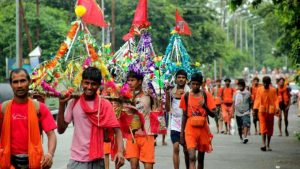
It is a pilgrimage organised in the Hindu calendar month of Shravana (Saavan).
- Saffron-clad Shiva devotees generally walk barefoot with pitchers of holy water from the Ganga or other holy rivers. The water is used by the pilgrims to worship Shiva lingas at shrines of importance.
- Devotees carry the pitchers of holy water on their shoulders, balanced on decorated slings known as In the Gangetic plains, the water is taken from pilgrimage sites such as Haridwar, Gaumukh and Gangotri in Uttarakhand, Sultanganj in Bihar, and Prayagraj, Ayodhya or Varanasi from Uttar Pradesh.
- An important festival with similarities to the Kanwar yatra in North India, called the Kavadi festival, is celebrated in Tamil Nadu, in which Lord Muruga is worshipped.




